Inverters are handy piece of equipment we could use whenever we face a power shut down or in a place where wiring is not possible. There are many types of inverters available in market from cheap one to expensive ones. Each differ with their functionality and the load they could handle. This tutorial brings out the design to build a simple 60w inverter using transistors.
WORKING:
Astable multivibrator using transistor will form the backbone of the above circuit. The complementary pulse output and the normal pulse is fed into the darlington pair of transistors formed by Q3 & Q4 and Q5 & Q6 . In darlington pair two transistors was connected in such a way current amplified by the first transistor is further amplified by the second one. Two dalrington pairs was used here since the current given the multivibrator is very less.
The signal from the darlington pair of transitsors was then fed to transistors Q7 and Q8 which was wired in push pull configuration. Each of the transistor Q8 and Q7 will amplify the positive and negative half cycles of the input wave. The amplified output is then fed to the transformer and then to the load.
As the astable multivibrator switches back and forth, it alternately turns on the two power transistors. The current in the transformer flows from the tap to the ends of the windings in opposite directions, causing the output to the desired AC. The current flows from +12V, through the windings, through the power transistors to ground.
12V center tapped transformer was used in this circuit. The current rating of the transformer can be chosen based on the load you are about to use along with this circuit. Heatsinks can be added along with the output stage transistors to avoid overheating. This 60w inverter is also called digital inverter since it was driven by square wave rather than by using a sine wave.

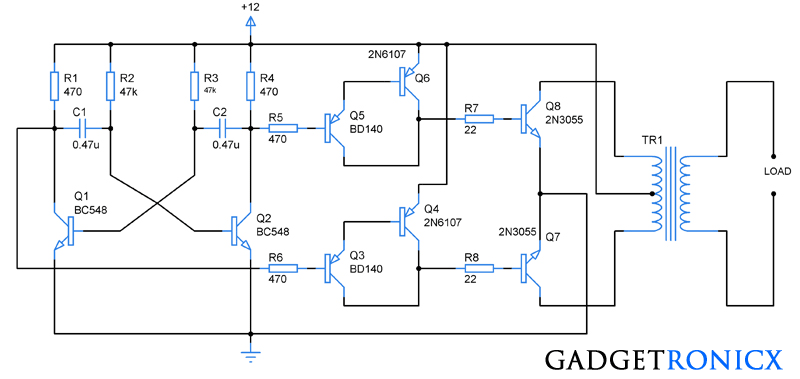
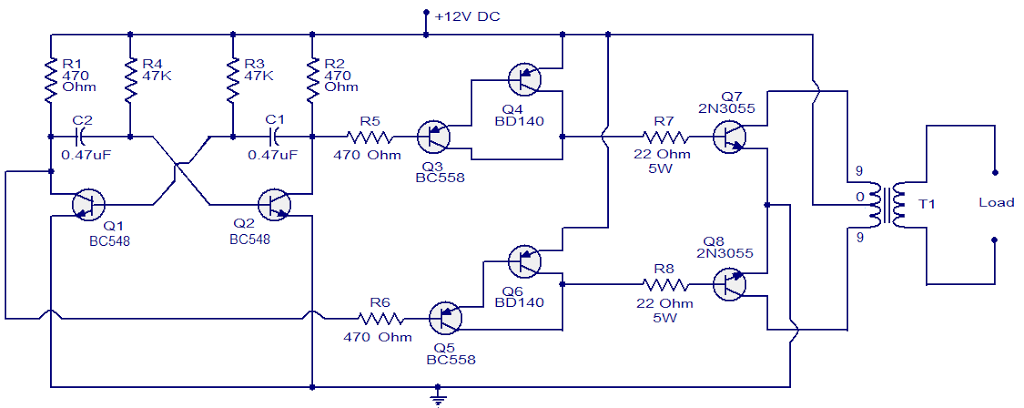
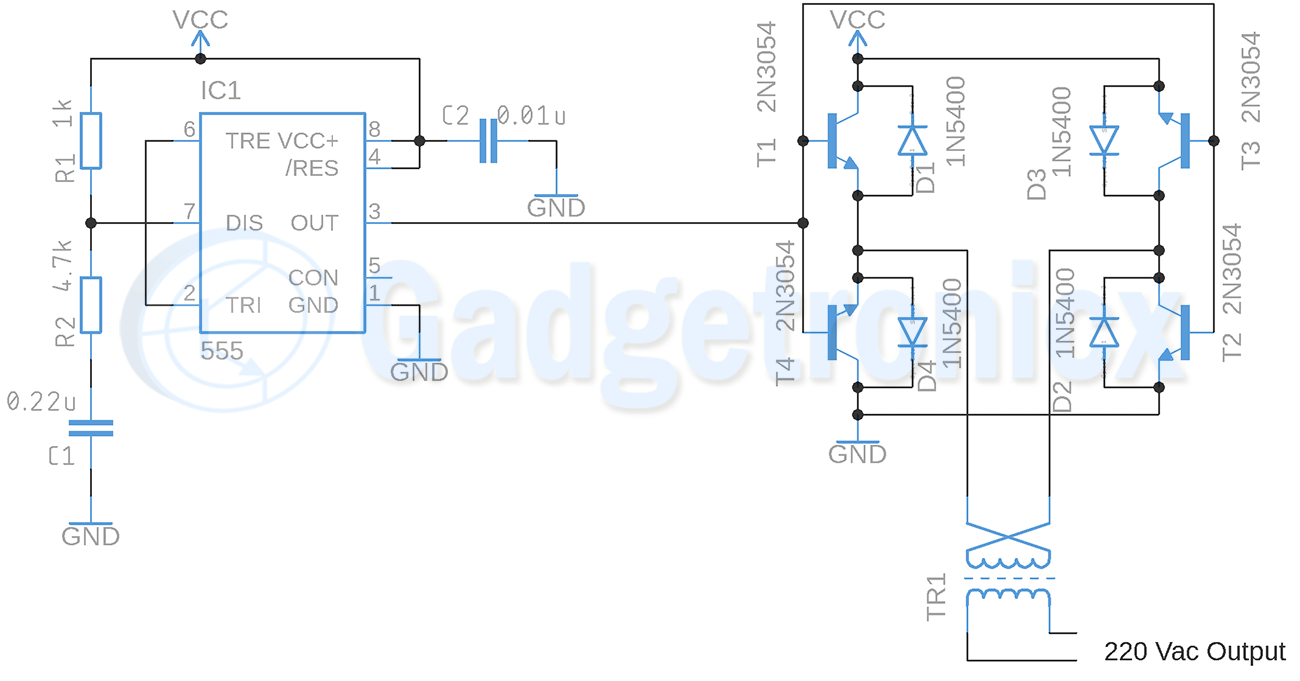
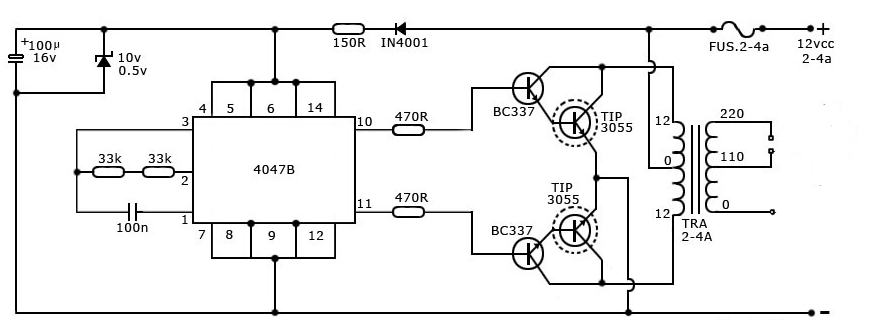
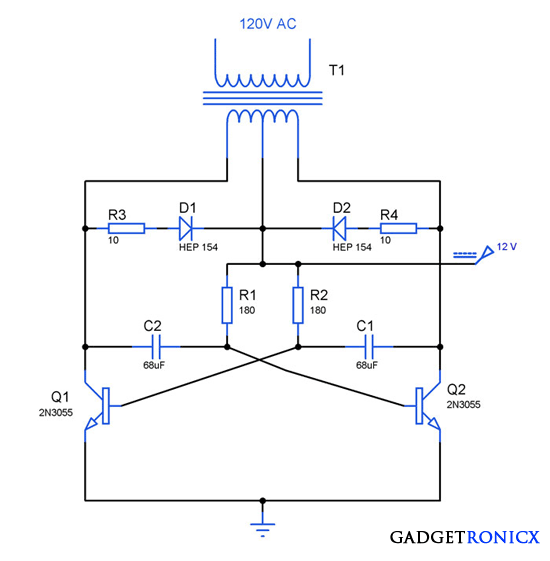
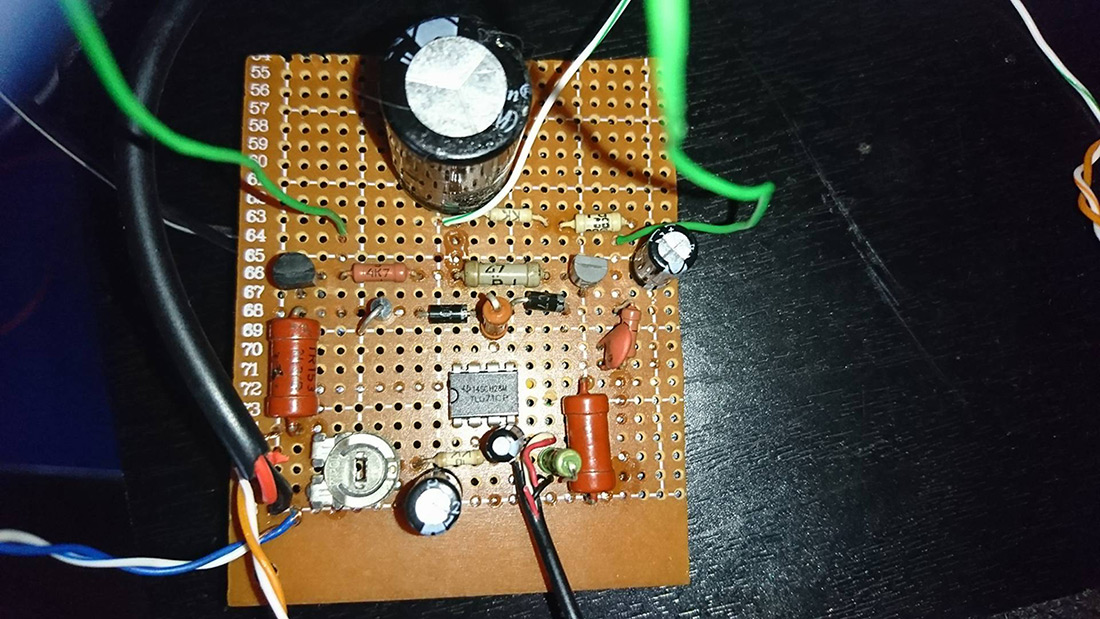
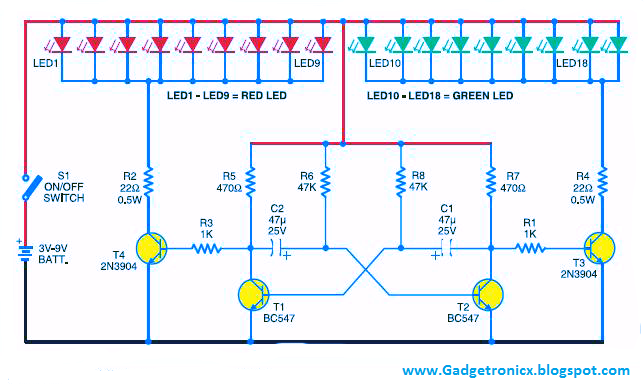
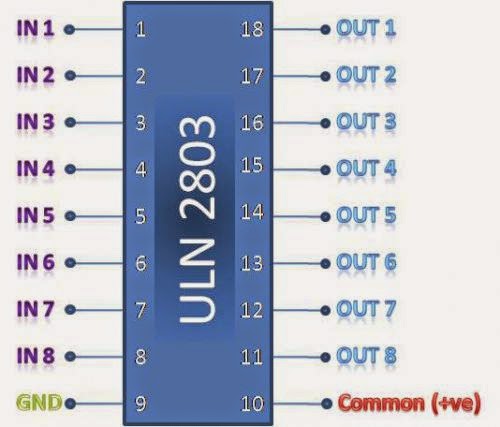
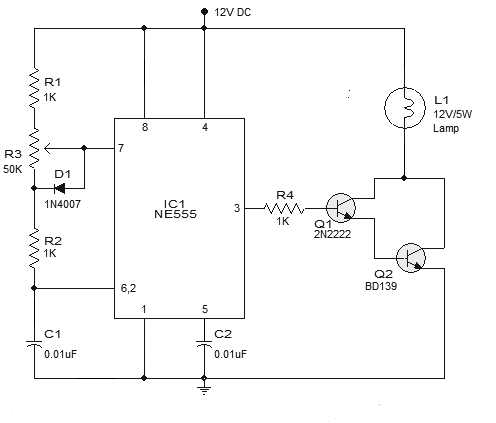
Methinks there is a line missing from the collectors of Q5, Q6 down to the negative supply rail (GND).